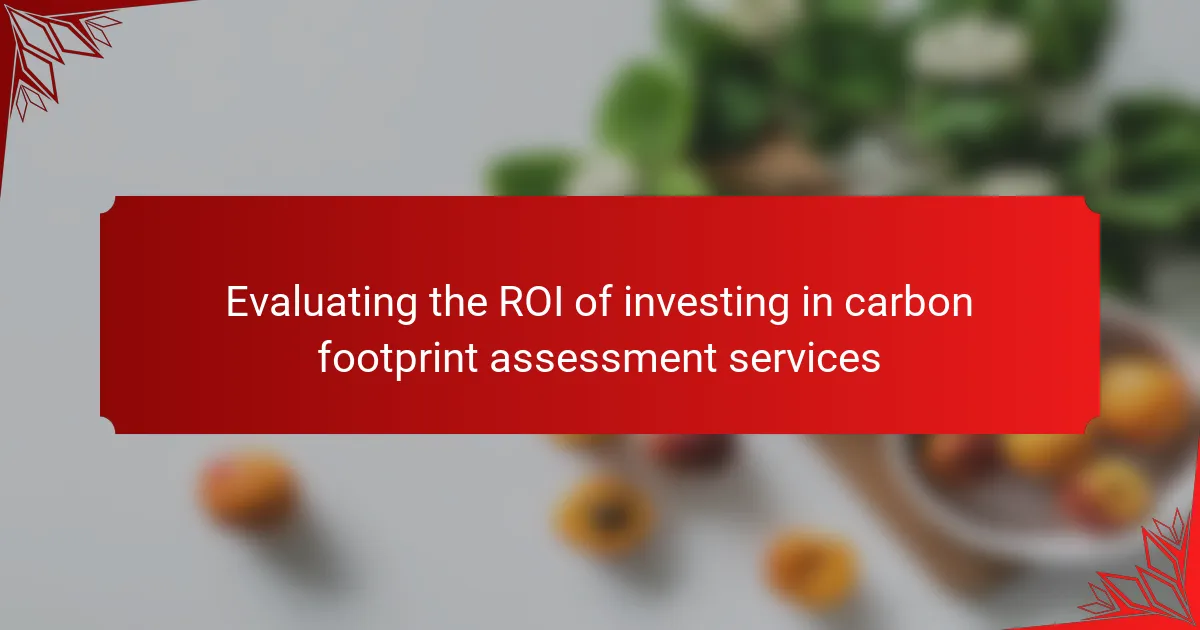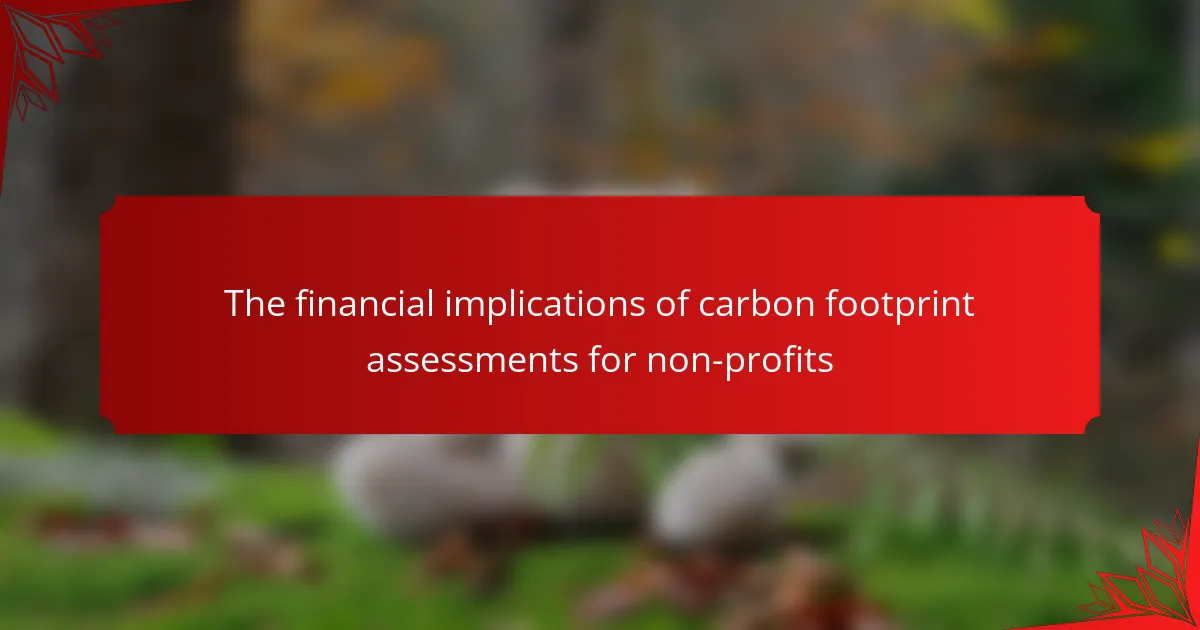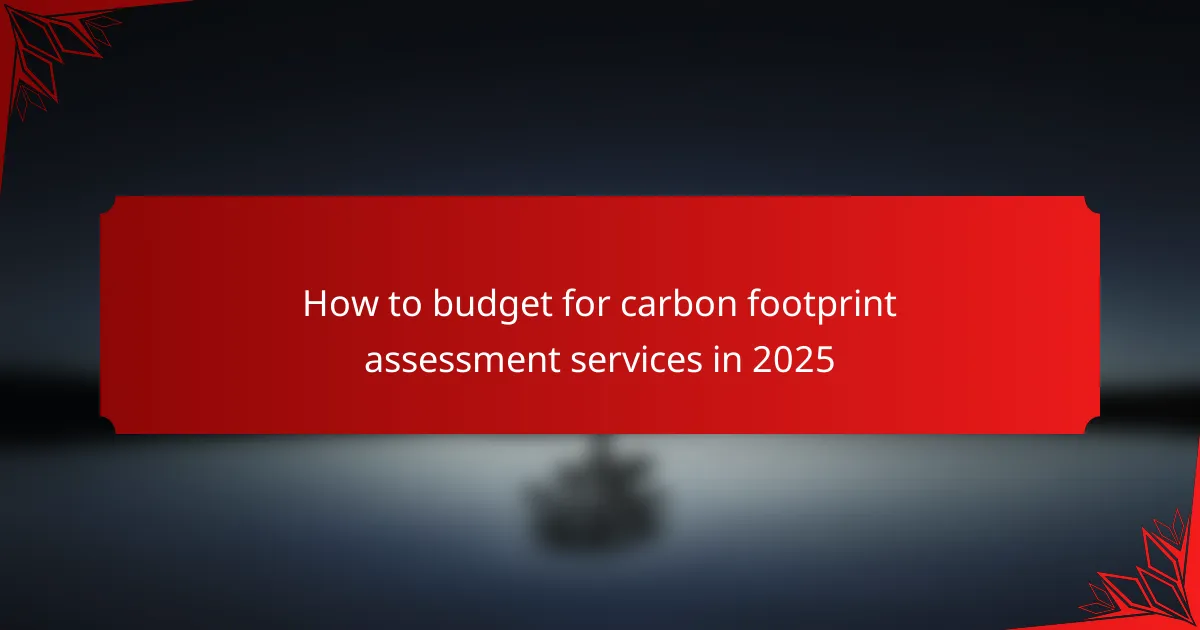Understanding the cost breakdown of carbon footprint assessments is crucial for small and medium-sized enterprises (SMEs) aiming to enhance their sustainability practices. Costs can vary widely based on factors such as the complexity of operations, assessment depth, and specific industry requirements. By recognizing these elements, SMEs can better allocate their budgets and explore cost-saving strategies, such as utilizing online tools and engaging local consultants.
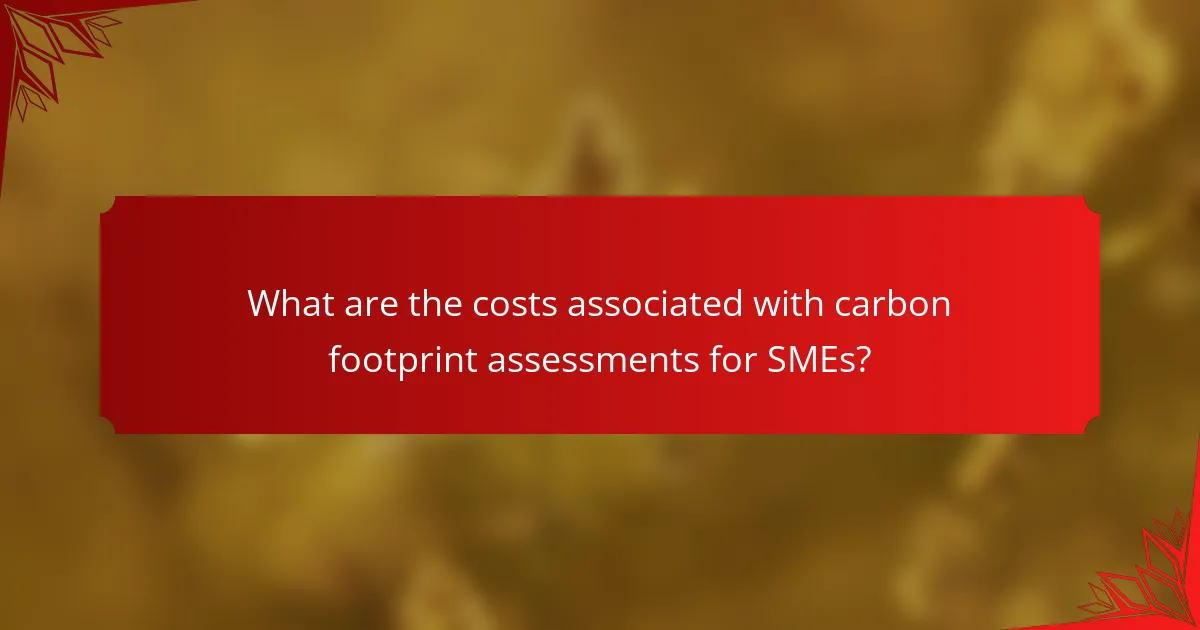
What are the costs associated with carbon footprint assessments for SMEs?
The costs associated with carbon footprint assessments for small and medium-sized enterprises (SMEs) can vary significantly based on several factors, including the complexity of operations and the depth of the assessment. Generally, SMEs should expect to allocate a budget that encompasses various components such as assessment fees, consultation charges, reporting expenses, certification costs, and software subscription fees.
Assessment fees
Assessment fees are typically the primary expense in a carbon footprint evaluation. These fees can range from a few hundred to several thousand dollars, depending on the size of the business and the scope of the assessment. For SMEs, a basic assessment might cost between 1,000 and 5,000 USD.
When selecting an assessment provider, consider their experience and the methodologies they use. Some firms may offer tiered pricing based on the level of detail required, so it’s beneficial to clarify what is included in each package.
Consultation charges
Consultation charges are incurred when businesses seek expert advice on how to reduce their carbon emissions. These fees can vary widely, often ranging from 100 to 300 USD per hour. Engaging a consultant can help SMEs identify specific areas for improvement and develop tailored strategies.
To manage costs, SMEs should consider scheduling a limited number of consultation sessions focused on key areas rather than extensive ongoing support. This approach can provide valuable insights without incurring excessive fees.
Reporting expenses
Reporting expenses include the costs associated with compiling and presenting the findings of the carbon footprint assessment. This may involve additional fees for data analysis, report generation, and presentation materials, typically amounting to several hundred dollars.
SMEs should ensure that the final report is clear and actionable, as it will serve as a foundation for future sustainability initiatives. Investing in a well-prepared report can facilitate better decision-making and stakeholder engagement.
Certification costs
If an SME seeks to obtain certification for its carbon footprint assessment, additional costs will apply. Certification fees can range from 500 to 2,000 USD, depending on the certifying body and the standards being pursued, such as ISO 14064 or PAS 2050.
Before pursuing certification, SMEs should evaluate the potential benefits, such as enhanced credibility and marketability, against the associated costs. This assessment can help determine if certification aligns with their business goals.
Software subscription fees
Many SMEs opt for software solutions to streamline their carbon footprint assessments and ongoing monitoring. Subscription fees for these platforms can vary, typically ranging from 50 to 300 USD per month, depending on the features offered.
When selecting software, SMEs should consider user-friendliness, integration capabilities, and customer support. Investing in the right tools can simplify data collection and analysis, ultimately leading to more effective carbon management strategies.
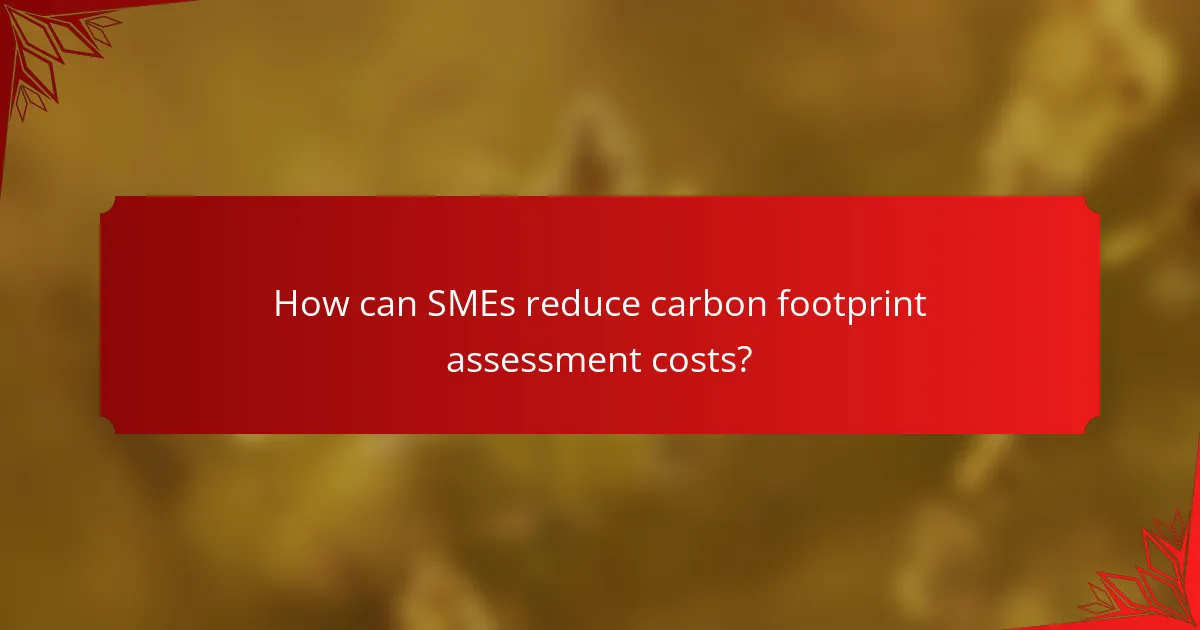
How can SMEs reduce carbon footprint assessment costs?
SMEs can effectively reduce the costs associated with carbon footprint assessments by leveraging online tools, opting for local consultants, and implementing in-house training programs. These strategies not only lower expenses but also enhance understanding and engagement with sustainability practices.
Utilizing online tools
Online tools for carbon footprint assessments provide SMEs with cost-effective solutions to measure and manage their emissions. Many platforms offer free or low-cost calculators that can guide businesses through the assessment process, allowing them to input data and receive instant feedback.
When selecting an online tool, consider features such as user-friendliness, data accuracy, and the ability to generate reports. Some popular options include the Carbon Trust’s Footprint Calculator and the Greenhouse Gas Protocol tools, which can significantly streamline the assessment process.
Choosing local consultants
Hiring local consultants can reduce travel costs and provide tailored insights into regional regulations and practices. Local experts often have a better understanding of the specific challenges and opportunities faced by SMEs in their area, leading to more relevant recommendations.
To find suitable consultants, look for those with experience in your industry and positive client testimonials. Engaging with local universities or environmental organizations can also help identify knowledgeable professionals who may offer competitive rates.
Implementing in-house training
Training staff in carbon footprint assessment can empower SMEs to conduct evaluations internally, reducing reliance on external consultants. In-house training programs can be designed to fit the specific needs of the business and can often be delivered at a lower cost than hiring outside experts.
Consider organizing workshops or online courses focused on sustainability practices and carbon accounting. This investment in employee education not only cuts costs but also fosters a culture of environmental responsibility within the organization.
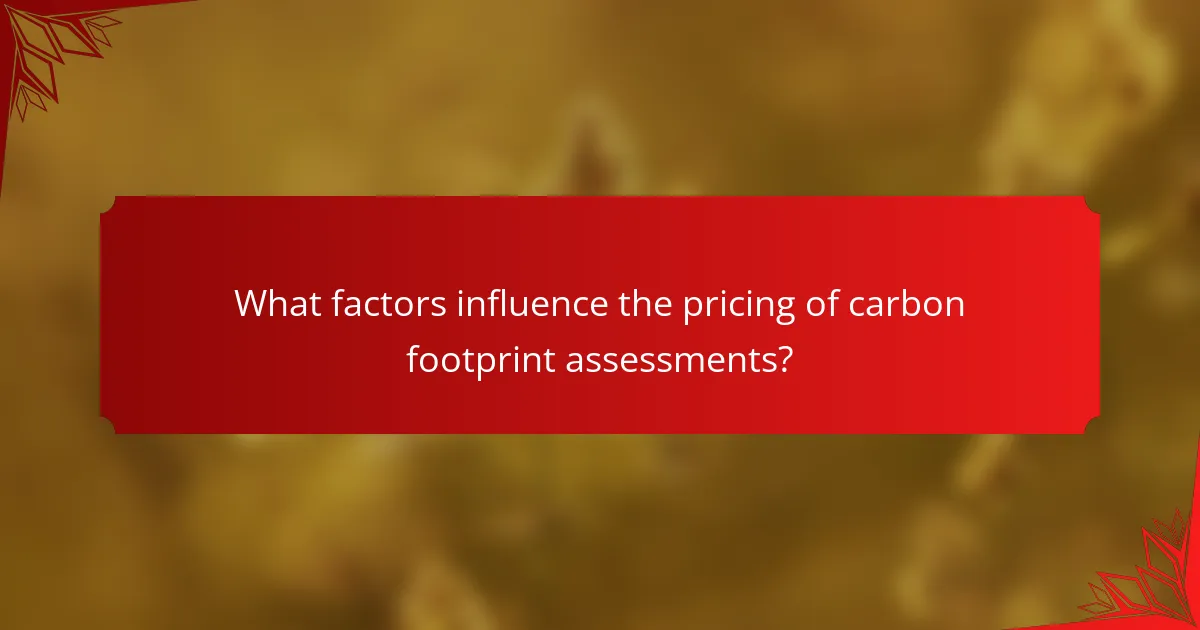
What factors influence the pricing of carbon footprint assessments?
The pricing of carbon footprint assessments for small and medium-sized enterprises (SMEs) is influenced by several key factors, including company size, industry type, and the scope of the assessment. Understanding these elements can help SMEs budget effectively and choose the right assessment approach.
Company size
Company size plays a significant role in determining the cost of carbon footprint assessments. Larger SMEs typically have more complex operations and higher emissions, which can lead to more extensive assessments and higher fees. Conversely, smaller companies may face lower costs due to simpler processes and fewer emissions to evaluate.
For instance, a small business might pay a few hundred to a couple of thousand dollars for a basic assessment, while a medium-sized enterprise could incur costs ranging from several thousand to tens of thousands of dollars, depending on their operational complexity.
Industry type
The industry type significantly affects assessment pricing due to varying regulatory requirements and emission factors. Industries such as manufacturing or energy tend to have higher emissions and stricter regulations, resulting in more detailed assessments and higher costs. In contrast, service-oriented sectors may have lower emissions and simpler assessments.
For example, a manufacturing SME might need a comprehensive assessment costing upwards of USD 10,000, while a consultancy firm could manage with a basic assessment costing around USD 1,000 to USD 3,000.
Assessment scope
The scope of the carbon footprint assessment directly impacts pricing, as broader assessments require more data collection and analysis. A full lifecycle assessment, which evaluates emissions from raw material extraction to end-of-life disposal, will be more expensive than a simpler operational assessment focusing only on direct emissions.
SMEs should consider their specific needs when determining the scope. A targeted assessment may cost between USD 1,500 and USD 5,000, while a comprehensive analysis could range from USD 5,000 to USD 20,000 or more, depending on the complexity and depth required.
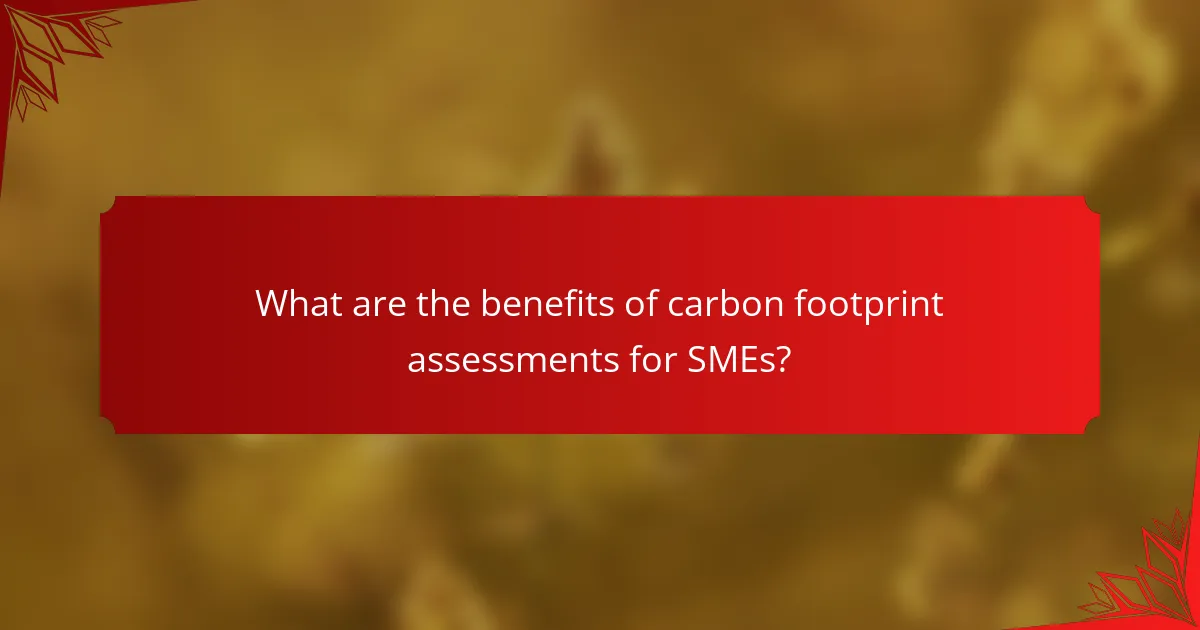
What are the benefits of carbon footprint assessments for SMEs?
Carbon footprint assessments provide small and medium-sized enterprises (SMEs) with a clear understanding of their environmental impact, enabling them to implement strategies for reduction. These assessments not only enhance sustainability but also improve brand reputation and ensure compliance with relevant regulations.
Improved sustainability
Conducting a carbon footprint assessment helps SMEs identify key areas where they can reduce emissions and enhance overall sustainability. By understanding their carbon sources, businesses can implement targeted strategies, such as optimizing energy use or improving supply chain efficiency.
For example, an SME might discover that a significant portion of its emissions comes from transportation. By switching to more efficient logistics or utilizing electric vehicles, the company can significantly lower its carbon output while potentially reducing costs.
Enhanced brand reputation
SMEs that actively engage in carbon footprint assessments and subsequent reduction strategies can bolster their brand reputation. Consumers increasingly prefer to support businesses that demonstrate environmental responsibility, which can lead to increased customer loyalty and market share.
For instance, a small retailer that promotes its commitment to sustainability through carbon reduction initiatives may attract eco-conscious customers, enhancing its competitive edge in the marketplace.
Regulatory compliance
Many regions are implementing stricter environmental regulations that require businesses to monitor and report their carbon emissions. By conducting a carbon footprint assessment, SMEs can ensure they meet these compliance requirements and avoid potential fines.
In the European Union, for example, companies may need to adhere to the EU Emissions Trading System (ETS). Understanding their carbon footprint can help SMEs align with such regulations and prepare for future legislative changes.
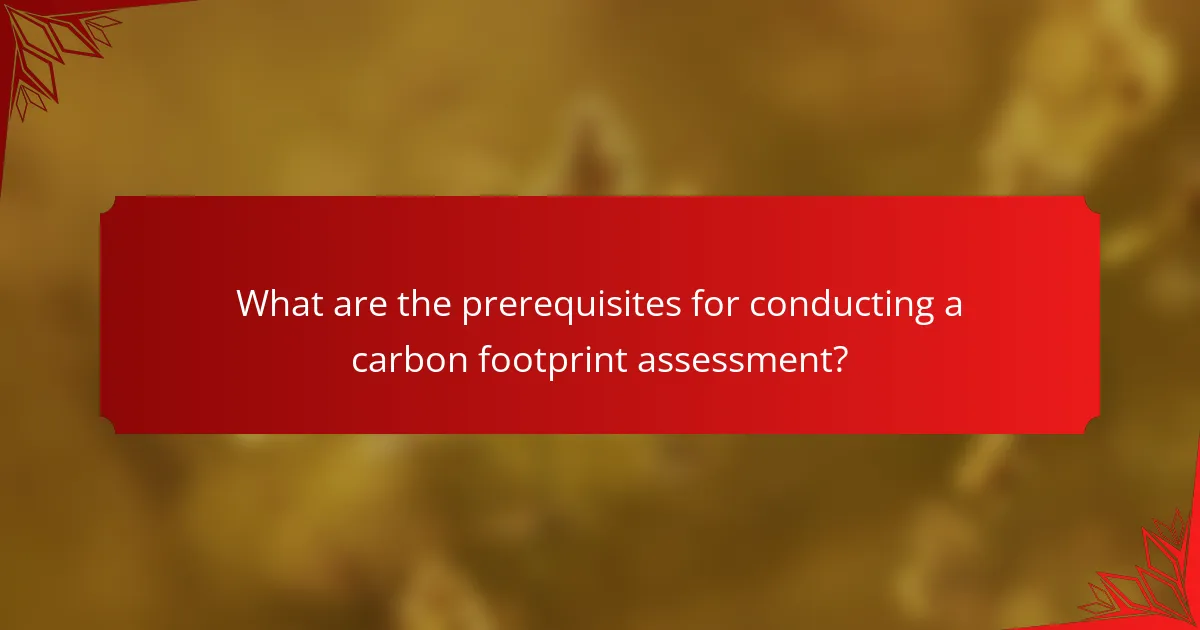
What are the prerequisites for conducting a carbon footprint assessment?
To conduct a carbon footprint assessment, small and medium-sized enterprises (SMEs) need to ensure they have the necessary data, stakeholder engagement, and existing sustainability policies in place. These prerequisites help streamline the assessment process and enhance its accuracy and relevance.
Data collection readiness
Data collection readiness involves having access to relevant information about energy consumption, transportation, waste management, and supply chain activities. SMEs should prepare by identifying key data sources, such as utility bills, travel logs, and procurement records.
Establishing a systematic approach to data collection can significantly improve the assessment’s efficiency. Consider creating a checklist of required data points and assigning responsibilities to team members to ensure thoroughness.
Stakeholder involvement
Engaging stakeholders is crucial for a successful carbon footprint assessment. This includes employees, management, suppliers, and customers who can provide insights and data necessary for the evaluation.
To foster involvement, SMEs should communicate the importance of the assessment and how it aligns with broader sustainability goals. Regular meetings and updates can help maintain engagement and encourage collaboration across departments.
Existing sustainability policies
Having existing sustainability policies provides a framework for the carbon footprint assessment. These policies can guide the assessment process and help identify areas for improvement.
SMEs should review their current sustainability initiatives and align them with the assessment goals. This alignment can enhance the credibility of the assessment and demonstrate a commitment to reducing environmental impact.

